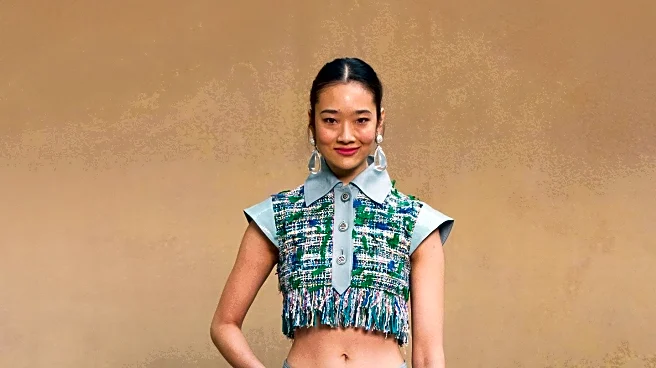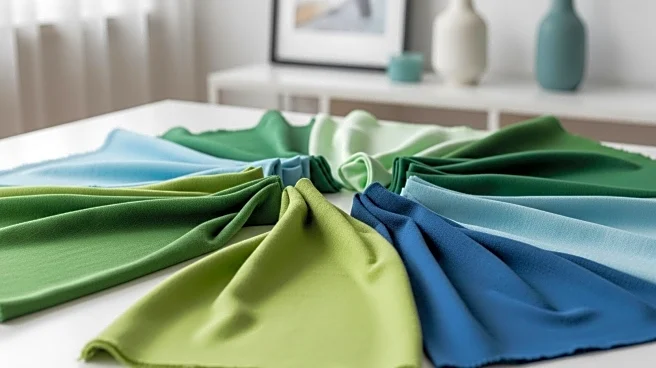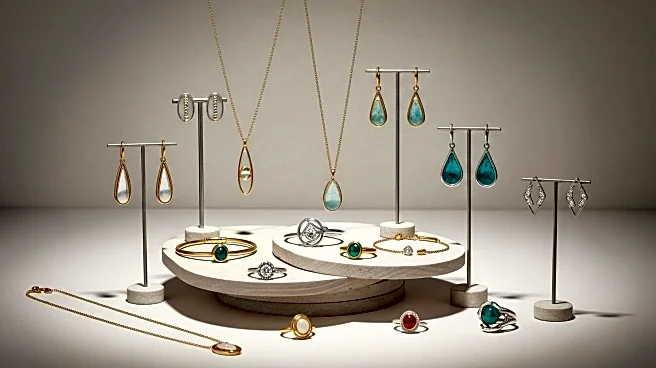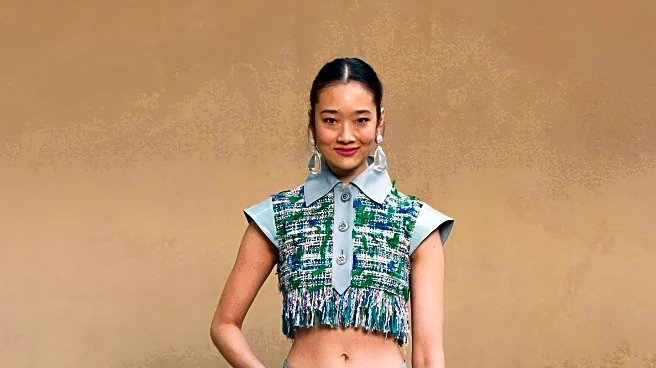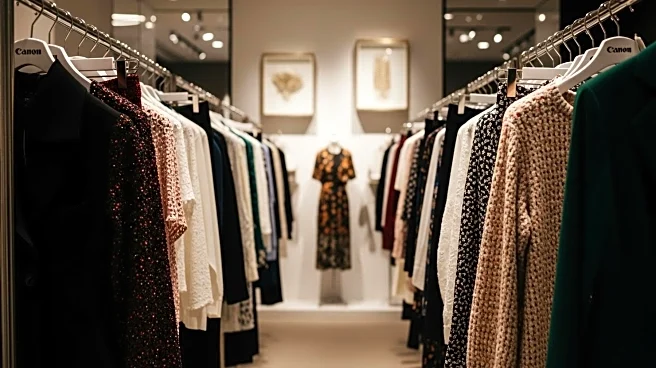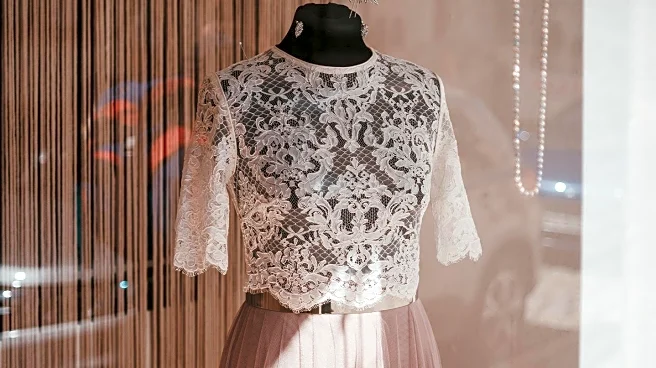What's Happening?
Alejandra Alonso Rojas has unveiled her Spring 2026 Ready-to-Wear collection, marking a significant shift towards sustainability in her fashion design. This collection is her first entirely eco-conscious line, utilizing responsible fabrications such as regenerative cottons, laces, and viscoses, all certified by GOTS or GRS. These certifications ensure the materials are produced through recycled or non-harmful processes. Rojas aims to demonstrate that sustainability does not compromise luxury, describing this collection as her most elevated yet. Inspired by a recent trip to Pompeii, Italy, the collection incorporates motifs and textures reminiscent of the archeological sites she visited. Additionally, Rojas pays homage to her Spanish heritage, drawing inspiration from the Casa de Alba's art collections and fashions, resulting in regal designs like torero jackets and sheer gowns. The collection also emphasizes community involvement, featuring lace appliqués crafted by artisans in Camariñas, Spain, and materials with FSC certification to protect biodiversity and Indigenous communities.
Why It's Important?
The shift towards sustainable fashion by Alejandra Alonso Rojas highlights a growing trend in the industry where environmental consciousness is becoming synonymous with luxury. This move could influence other designers and brands to adopt similar practices, potentially leading to a broader industry shift towards eco-friendly production methods. By integrating sustainability with high fashion, Rojas challenges the notion that eco-conscious designs must be basic, setting a precedent for elevated sustainable fashion. This approach not only benefits the environment but also supports local communities and artisans, promoting ethical production practices. As consumers become increasingly aware of the environmental impact of fashion, collections like Rojas's could drive demand for sustainable options, influencing market trends and consumer behavior.
What's Next?
Alejandra Alonso Rojas plans to maintain her commitment to sustainability in future collections, ensuring transparency by providing QR codes with detailed information on each piece. This initiative could set a new standard for transparency in the fashion industry, encouraging other designers to follow suit. As the collection becomes available, it will be interesting to observe consumer reception and whether this influences broader industry practices. The success of Rojas's collection could inspire other designers to explore sustainable options, potentially leading to collaborations with artisans and communities worldwide. Additionally, the integration of technology for transparency might become a common practice, enhancing consumer trust and engagement.
Beyond the Headlines
Rojas's commitment to sustainability extends beyond environmental concerns, incorporating ethical considerations by supporting artisans and communities. This approach highlights the intersection of fashion with social responsibility, emphasizing the importance of preserving cultural heritage and promoting fair labor practices. The use of FSC-certified materials underscores the need for responsible resource management, which could influence industry standards and regulations. As sustainability becomes a key focus in fashion, it may lead to innovations in material science and production techniques, driving long-term shifts in how fashion is conceived and produced.
